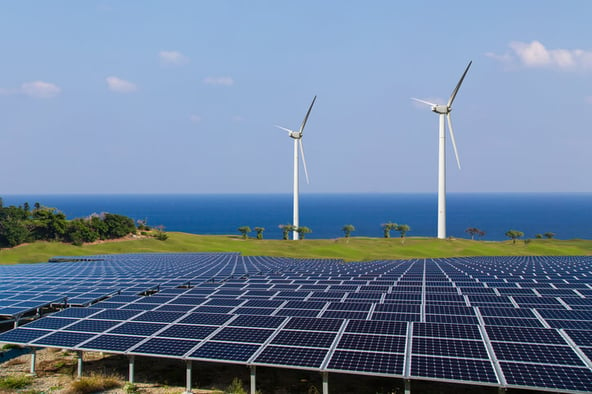
New Zealand farmers; you’re living in an exciting time when it comes to energy usage, and the agriculture industry has a perfect chance to lead the way in demonstrating a commitment to sustainable power in our country.
Using renewable resources to fuel your farm really is a no-brainer, especially when considering recent media comments about the farming industry's public reputation in New Zealand.
You can reduce your power costs greatly from what you currently spend and build a new source of income, as you resell any excess energy generated by sustainable means back to the grid.
All this as you rest easy, knowing that you’re contributing to a greener New Zealand.
In this blog post we look at 3 easy-to-adopt sustainable options for Kiwi farmers looking to 'go green' and create a cleaner, healthier future – one that’s free of fossil fuel dependence and preserves our natural environment.
Wind energy
Using wind turbines, farmers can simply use the wind that blows through their property to generate energy at great cost savings compared to traditional power sources – and in many cases even to generate profit over time.
Land area requirements are minor, with approximately only 1 square kilometre needed for installing 10-15 MW worth of wind energy infrastructure.
A typical farm should be able to accommodate turbines without disturbing crops or livestock, or disrupting your farming activities.
By working with an experienced developer, you’ll understand how viable your land is for conversion to wind energy, work out all legalities and rights, and learn when your wind power infrastructure will start to pay for itself.
Wind is a great way to produce sustainable power throughout the year, with practically no effort on your part!
Solar energy
Solar power is a very easy way for a farmer to adopt sustainable practices.
Simply have your panels installed, and you’re ready to begin replacing your carbon footprint with naturally-harvested energy from sunlight, every day.
Depending on how your rooftops are oriented, solar panels will be installed in the best possible position to directly face the sun.
Or, another option is to have a ground-mounted structure installed, with panels angled appropriately to capture as much sunlight as possible.
The benefits are huge.
Farmers can lower their carbon footprint and immediately start to save money on gas and electricity, from day 1 of install.
By working with experienced advisers, you’ll get a clear picture of how much energy your farm will get, and how much of a solar energy payback you can expect in the future.
As you meet your fuel needs with the same sunlight that grows crops and sustains livestock, your farm can become a shining example of sustainable agriculture.
Biomass energy
Crops and manure are being looked at increasingly by New Zealand farmers as sources of renewable energy in agri-business.
Forward-thinking farmers who jump on board with biomass can start benefiting right away.
Biomass reuses the very organic materials and matter produced by farms every day. It’s a great way to become more energy-efficient, while saving money and potentially adding an income source.
One important biomass example under study in New Zealand is miscanthus, a plant which can be used for purposes ranging from bedding for livestock to building materials.
It has the potential to output 15x the amount of energy that’s put into its cultivation. After the plant’s parts are fully utilized for other needs, it can be compacted into a dense pellet for direct use as fuel, or to be sold for income.
Sustainable energy is a great opportunity for farms of many types and sizes.
The cost savings, income opportunities, and the chance to be a first-mover in a green energy future should encourage any farmer to think about renewable energy upgrades.








